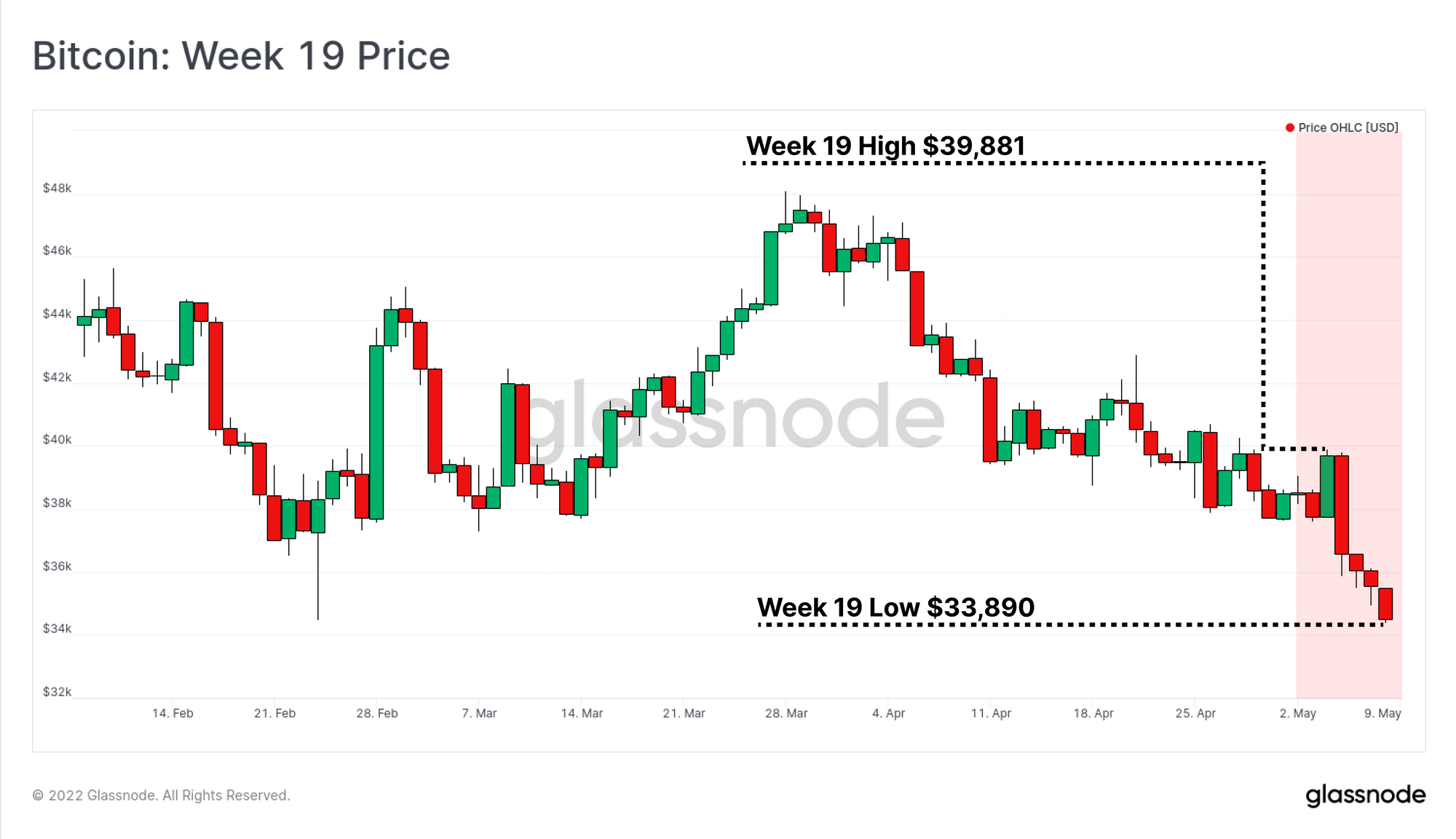Rate Hikes Drive Markets Lower
Bitcoin bulls remain under pressure this week, as prices fall back to $33.8k, and network profitability falls by ~10%. Weakness has appeared across ETF product flows, stablecoin supply contraction, and in investor urgency to deposit coins to exchanges, largely in response to downside volatility.

Markets experienced high volatility and further downside this week, as the market responded to the Federal Reserve's decision to hike rates by 0.5%. Markets initially responded well to the news on Wednesday, with Bitcoin rallying to the weekly high of $39,881. However, the positive momentum was short-lived, with markets selling off heavily on Thursday, and Bitcoin trading down -13.8% to close the week at $33,890.
In this edition, we will first assess the state of network profitability, and how it has changed relative to the 'bear market pain threshold' case study we proposed last week. Then we will take a holistic view and observe the market reaction to the recent price weakness across a number of market sectors:
- On-chain transaction space and urgency in the mempool.
- Exchange inflow and outflows as a gauge for capital flows.
- Futures markets and liquidations to assess deleveraging risk.
- Fund flows into exchange traded ETFs in Canada.
- The first major stablecoin supply contraction in recent years.


